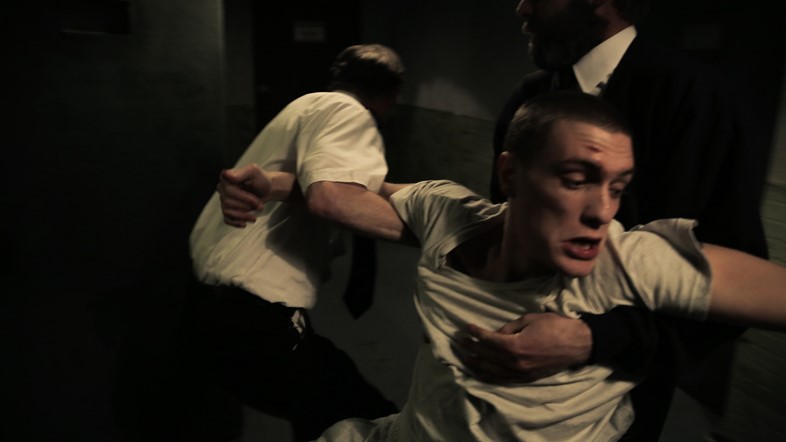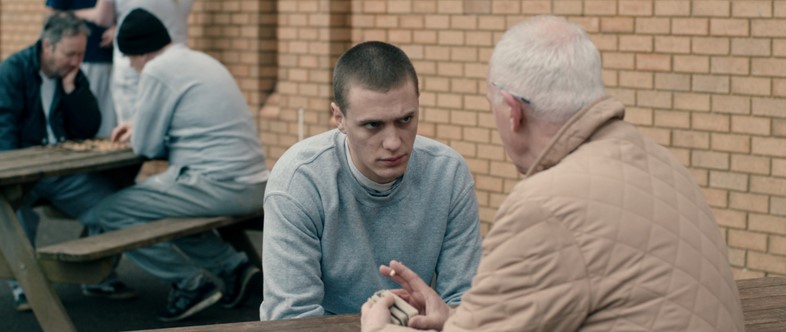A conversation with the director, writer and subjects of a short film exploring the unjust sentencing of graffiti artists
On the same day that known graffiti writer Vamp was sentenced to 3 years for vandalism, a BBC presenter, Stuart Hall, was given 15 months for the sexual assault of 13 young girls over 20 years, between the ages of 9 and 17. The contrast here is worrying evidence that in the event of two guilty verdicts, the courts seem to place more value on the inconvenience of spray paint on an old brick wall than they do on the lives of underage assault victims.
Disturbed by a justice system that at times is not so just, Molly Manning Walker found inspiration to write a short film, More Hate Than Fear, as a follow-up to a documentary of the same name, that she had made on the same subject. Viewing graffiti as the ultimate freedom of expression, she felt moved to help preserve it but also highlight what was happening to its artists. She explains: “Graffiti is freedom of speech, it’s a statement of unhappiness with the status quo. But it’s not graffiti that drove me to make this film – it’s the disproportionate prison sentences.” Walker tells Dazed, “what has become apparent is that we have a judicial system that values money and property over human life.”
“What has become apparent is that we have a judicial system that values money and property over human life” – Molly Manning Walker
And unfortunately, her fears are backed by facts – graffiti writers are being sentenced to years in prison and placed in high-risk facilities alongside violent offenders.
Written by Molly Manning Walker and directed by Billy Boyd Cape, the film tails a young graffiti artist struggling to navigate prison at the beginning of his sentence. After an altercation with his aggressive cellmate, the young prisoner returns to sketching as an escape. As days pass, he starts to come to terms with his circumstances, makes a friend and even learns a few tricks. By the end of the film, everything he comes to know is called into question once again, as he tries to figure out who he can trust. It's a hard-hitting glimpse into the dark reality kids are facing in high security prisons, for crimes as small as graffiti in an underground tunnel.
“... by putting a writer in prison, you are not deterring them; you are inspiring them.” – Harry Conway
In a society where the likes of McDonald’s, Adidas and Nike decorate their spaces and marketing campaigns with graffiti, when reporters regularly adopt street art as backdrops for broadcast and the style embellishes designer clothes worldwide, it seems almost farcical to suggest that society might be scared of the prolific art form. Rather, the fear of graffiti is governmental and stems from a fear of loss of control, as Cummings suggests in Walker’s earlier documentary.
However, the role the public plays is a different one altogether and boils down to a lack of awareness, one of the reasons this film was so important to both Walker and also director, Billy Boyd Cape. Cape states it plainly: “In the minds of the general public, there is this belief that once someone is found guilty and gets locked up, they probably deserved it. There is no sympathy … There desperately needs to be a change in public perspective.”
A blind trust is being put in structures that are routinely failing to prioritise citizens’ wellbeing over public property. And in doing so, the punishment for costing the government money in damages, is costing the government even more in over-filled prisons as well as generating a vicious cycle of offending.

Harry Conway, subject of the original More Hate Than Fear documentary, deconstructs precisely why the unjust sentencing of graffiti writers does more harm than good. “Yes, it’s a crime and should be punishable,” he says. “But by putting a writer in prison, you are not deterring them; you are inspiring them.”
Conway explains how prison sentences for graffiti artists – placing them in close proximity to higher risk criminals – actually introduces them to a wider ring of criminal activity and sets them up with the knowhow and connections to, as he puts it “live this life of crime.” Instead, Conway suggests a simple and effective solution for the crime – community service – as “a solid way of repaying their debt that also doesn’t cost the taxpayer anywhere near as much as paying for a prisoner.”
Our current socio-political climate has meant that youth political engagement has risen rapidly in the face of a government that refuses to listen to our demands for change. Artistic expression has always been a way to reject the status quo, while graffiti art is one of the longest standing avenues for this. When the system considers damage to private property more harmful to society than violence against underage victims, we have to ask whose interest that could even be in.
Unjust sentencing of non-violent offenders can only be seen as a gesture of performance to try and silence a generation that is disenfranchised but self-empowered. And the manner in which graffiti writers are being scapegoated is stubbornness to the detriment of our prison system, society as a whole and the lives of young artists. Branding them as severe criminals and treating them as such will, at best destroy any chance of rehabilitation, and at worst become a self-fulfilling prophecy – raising the question of who exactly has the right to disrespect and reduce another person’s freedom to just a threatening message for others.
You can watch the full film above.





